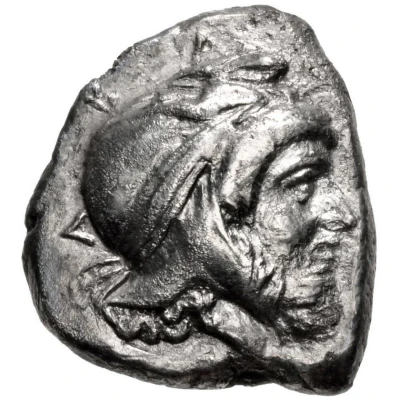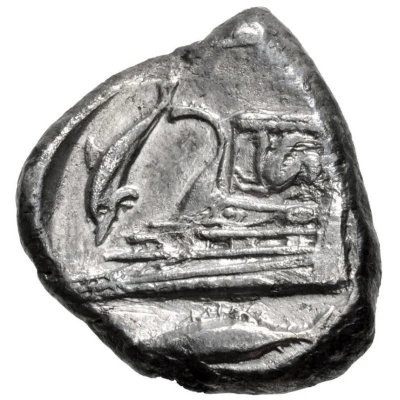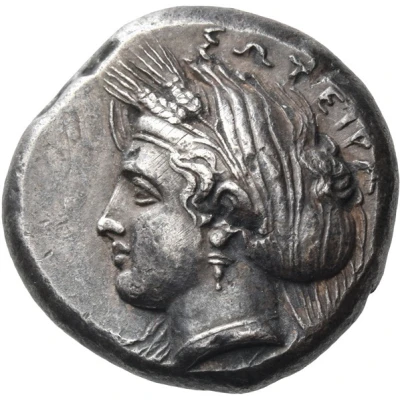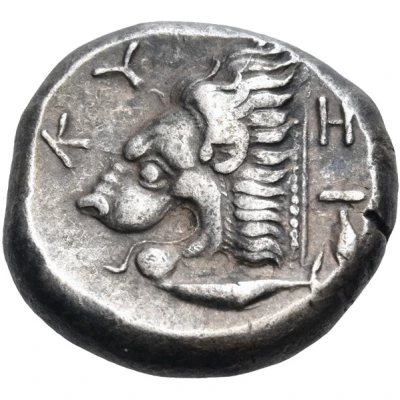


© Classical Numismatic Group, Inc.
Tetradrachm - Pharnabazus 398 BC - 395 BC
| Silver | 14.22 g | 21 mm |
| Issuer | Kyzikos (Mysia) |
|---|---|
| Type | Standard circulation coin |
| Years | 398 BC - 395 BC |
| Value | Tetradrachm (4) |
| Currency | Drachm (500-27BC) |
| Composition | Silver |
| Weight | 14.22 g |
| Diameter | 21 mm |
| Shape | Round (irregular) |
| Technique | Hammered, Incuse |
| Orientation | Variable alignment ↺ |
| Demonetized | Yes |
| Updated | 2024-10-10 |
| Numista | N#431864 |
|---|---|
| Rarity index | 100% |
Reverse
Ornate ship’s prow left, decorated with a griffin and prophylactic eye; before and after, two dolphins downward; below, tunny left; all within shallow incuse circle.
Comment
Maffre 7; Bodzek 4; Meadows, Administration 330; Winzer 9; SNG Copenhagen Supp. 303.
Maffre located thirteen extant examples, eight of which are in museum collections.
Interesting fact
The Tetradrachm coin from Kyzikos (Mysia) featuring Pharnabazus (398 BC - 395 BC) is interesting because it showcases a unique blend of Greek and Persian influences in its design. The coin's obverse features a portrait of Pharnabazus, who was a Persian satrap (governor) of the region, while the reverse depicts the Greek goddess Athena and a shield with the inscription "Kyzikos" in Greek. This fusion of cultural elements reflects the complex political and cultural landscape of the region during that time period.



